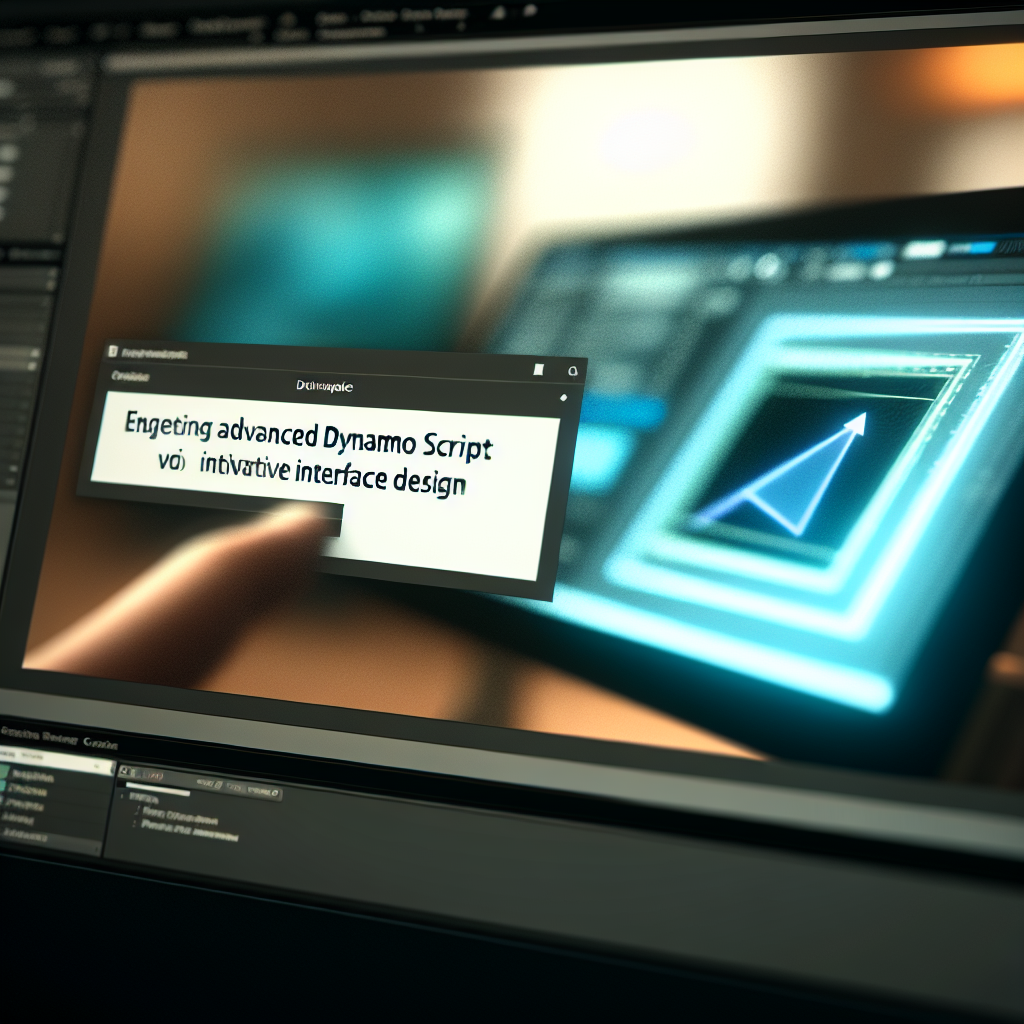Enhancing Dynamo scripts with user interfaces (UIs) significantly improves their usability and interactivity, making complex automation workflows more accessible. In this article, we will explore how to add intuitive UIs to Dynamo scripts, guiding you through the development process with practical presentation tips and a demonstrative example. Discover how to streamline your Dynamo workflows today!
Designing Effective User Interfaces for Dynamo Scripts
Creating a user interface for your Dynamo scripts involves carefully considering the user experience and the specific data inputs required to run the automation smoothly. Unlike native Dynamo nodes, custom UIs allow users to input parameters dynamically, visualize results, and control script execution without diving into code. To achieve this, developers typically utilize Dynamo’s built-in DataEntry components or external UI frameworks like Firefly or even integrate with Python scripts that leverage GUI libraries like PyQt or WPF.
Key aspects to consider include:
- Clarity and simplicity: Avoid clutter by only including necessary inputs and controls.
- Responsiveness: Provide immediate feedback or validation as users input data.
- Consistency: Use familiar UI patterns to reduce user learning curves.
To illustrate this concept, the embedded YouTube video demonstrates a step-by-step process of building a custom UI within Dynamo that interacts seamlessly with a script, enabling real-time parameter adjustments and output visualization. This integration transforms static scripts into interactive tools, substantially enhancing usability and efficiency.
Practical Example: Building and Embedding a UI in Dynamo
In this section, we’ll walk through a practical example where a Dynamo script is augmented with a custom UI, allowing users to select parameters via sliders, dropdowns, and buttons. The process begins with design considerations, ensuring the interface aligns with user needs and project goals.
First, you design the UI layout using Dynamo’s DataEntry components or external tools to create a window with input controls. Then, you connect these controls to your script’s inputs, ensuring data flows dynamically from the UI to the core automation logic. Using Python nodes, you can further customize UI behavior and validation, creating more sophisticated interactions.
As demonstrated in the accompanying demo, users can select building elements, set dimensions, and instantly see results or model updates without modifying scripts manually. This approach not only saves time but also reduces errors, especially in collaborative environments or with non-technical stakeholders.
Implementing such UIs involves both design and technical skills but pays off through increased productivity and broader accessibility of Dynamo scripts, turning complex automation into user-friendly tools.
Conclusion
Adding user interfaces to Dynamo scripts transforms static automation into interactive, user-friendly tools that enhance workflow efficiency and accessibility. By carefully designing interfaces with clarity and responsiveness in mind, and leveraging Dynamo’s native tools or external frameworks, users can achieve more with less technical overhead. Embrace UI integration to take your Dynamo scripts to the next level and make complex automation accessible to everyone.
